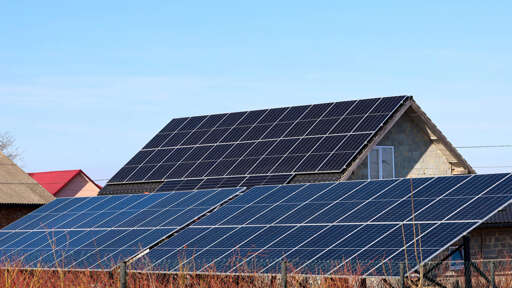cross-posted from: https://slrpnk.net/post/24690127
Solar energy experts in Germany are putting sun-catching cells under the magnifying glass with astounding results, according to multiple reports.
The Fraunhofer Institute for Solar Energy Systems team is perfecting the use of lenses to concentrate sunlight onto solar panels, reducing size and costs while increasing performance, Interesting Engineering and PV Magazine reported.
The “technology has the potential to contribute to the energy transition, facilitating the shift toward more sustainable and renewable energy sources by combining minimal carbon footprint and energy demand with low levelized cost of electricity,” the researchers wrote in a study published by the IEEE Journal of Photovoltaics.
The sun-catcher is called a micro-concentrating photovoltaic, or CPV, cell. The lens makes it different from standard solar panels that convert sunlight to energy with average efficiency rates around 20%, per MarketWatch. Fraunhofer’s improved CPV cell has an astounding 36% rate in ideal conditions and is made with lower-cost parts. It cuts semiconductor materials “by a factor of 1,300 and reduces module areas by 30% compared to current state-of-the-art CPV systems,” per IE.



Honestly, we don’t need the technology to get any better than it is. It’s nice, but not necessary. Labor costs of deployment are the biggest limiting factor.
Wouldn’t better efficiency lead to less physical requirements for the same output which leads to lower labour costs?
My numbers were wrong:
https://www.nrel.gov/solar/market-research-analysis/solar-installed-system-cost
Hardware costs (module, inverters, etc.) are about half the price of the installed residential cost. The rest is “soft costs”, and labor is included in it, but it’s a pretty small fraction of it. The “other” soft costs are the big thing–stuff like permitting and planning and sales taxes. Better efficiency might somewhat lower it, but not a lot.
Notice that when things get to utility-scale, those soft costs shrink a lot. The best way to do solar is in large fields of racks, and it isn’t even close. The solution to this is community solar, where you and your neighbors go in on a field. Some states ban this, and that should change.
Yeah, community solar parks are really the best because they remove a whole lot of these soft costs.
These soft costs include:
additionally, any kind of fixed-cost complexity is spread over a bigger field.
i.e., you should add circuit breakers to make sure the solar panels don’t feed into the grid when the energy prices are already negative. adding that breaker has a fixed and constant price. adding one breaker to a large park is more efficient than adding 100 breakers into just as many households.
Thanks. There’s way too many people who don’t see the problems with rooftop residential solar. Commercial/industrial rooftop can work out, but fields are the cheapest electricity you can get.
If you get efficiency gains of around 50% (factor 1.5 from ~20% efficiency to ~30%) with the same deployment costs, this should nonetheless make it more cost-effective.